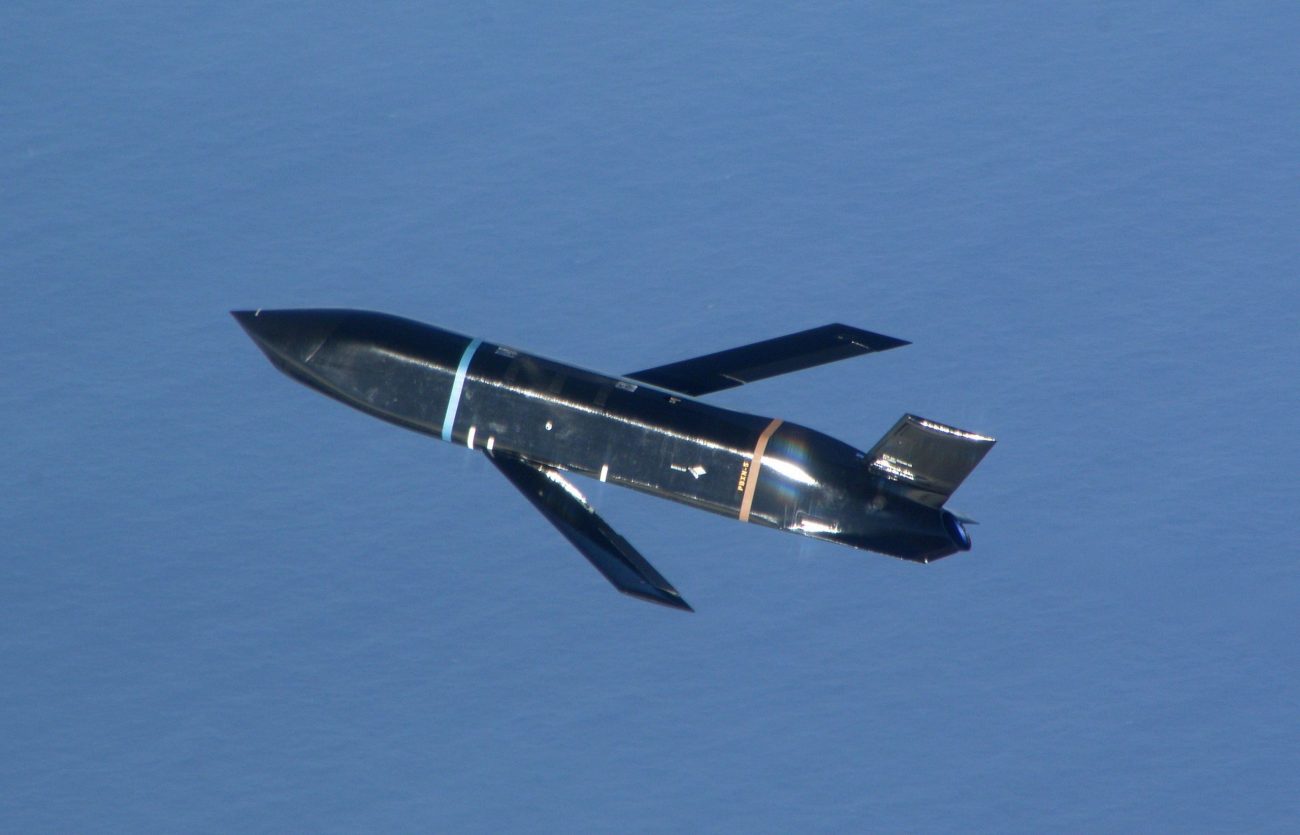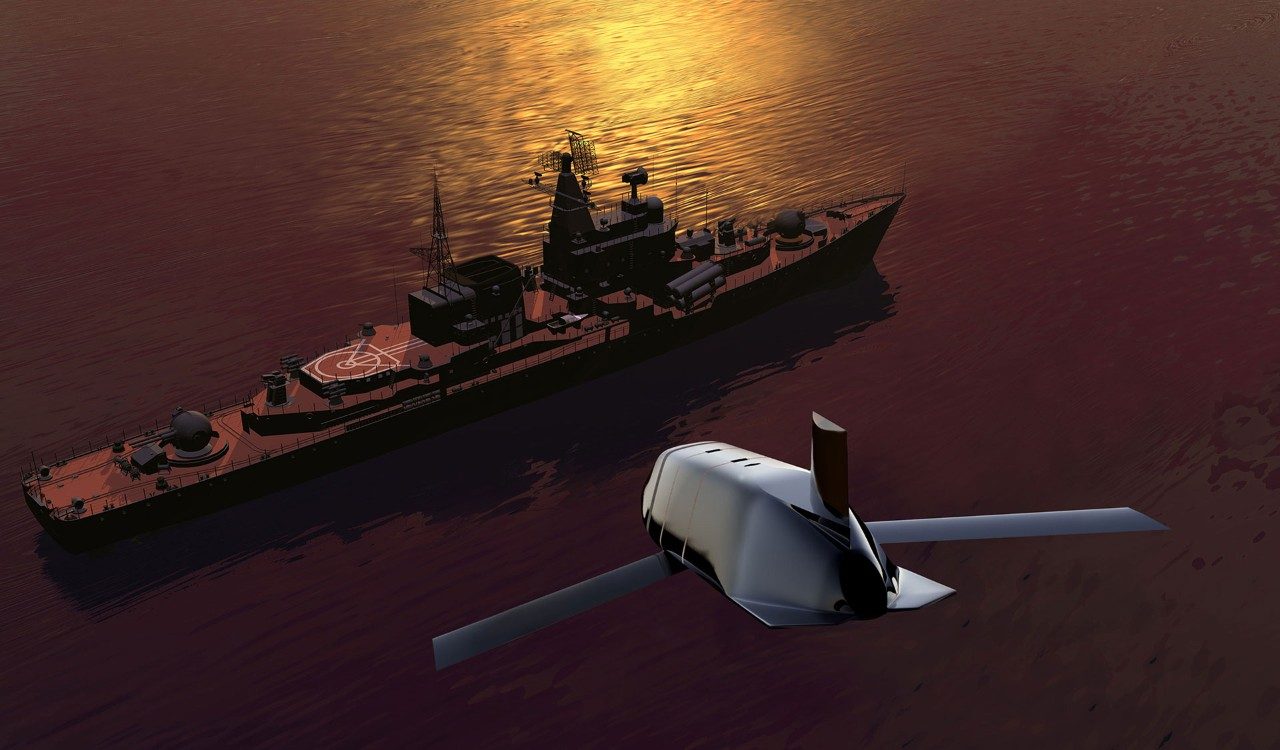The United States Navy recently launched four AGM-158C-3 Long-Range Anti-Ship Missiles (LRASMs) at once in what is being described as a “graduation exercise for the latest configuration” of the stealth anti-ship missile.
The historic event—that is how it was termed—was announced by Lockheed Martin, the missile manufacturer, in a press release on April 3. The release stated that the test was conducted during the “12th Integrated Test Event” but stopped short of providing any information on the precise location or time of the test.
According to the contractor, the test demonstrated the LRASM’s “inherent high-end lethality from mission planning through kill chain integration and its effects on the target.” The US Navy also expressed satisfaction, saying that the test met every mission objective.
“We have continued to invest in the design and development of LRASM’s anti-surface warfare capabilities to ensure that warfighters have the 21st-century security solutions they need to complete their missions and come home safely,” said Lisbeth Vogelpohl, LRASM program director at Lockheed Martin Missiles and Fire Control.
“This event was a testament to our commitment to deliver reliable products that work every time, ensuring those who serve stay ahead of ready.”
Lockheed added that the test represented the next “big step” in the development of LRASM. The contractor said the LRASM was a cruise missile belonging to the AGM-158 family that offered a lethal, long-range, and extremely survivable capability against well-defended surface combatants that was unmatched by any other weapon in the arsenal.

The test comes exactly a year after Lockheed announced that it would double the production of two most sought-after long-range precision missiles in the US inventory: the LRASM and the JASSM-ER (Joint Air-to-Surface Standoff Missile – Extended Range).
The LRASM has been successfully installed and fielded on the B-1B and F/A-18E/F, and integration contracts for the F-35 and P-8 aircraft are now being worked on with US services and partners. For one, the US Air Force (USAF) has churned up a multi-year plan to acquire the formidable LRASM.
With the ability to deliver a precise payload from a safe distance, this precision-guided intelligent anti-ship missile can intercept a wide spectrum of surface threats. It can navigate to its target semi-autonomously. The LRASM has a minimum range of 200 nautical miles and can be deployed against land-based targets, aircraft, drones, hostile ships, and shallow submarines.
With its advanced guidance operation, LRASM technology enables the weapon to use gross target cueing data to find and destroy its pre-defined target in denied environments, thereby reducing reliance on GPS navigation, network links, and ISR (intelligence, surveillance, and reconnaissance) platforms in hostile electronic warfare environments.
The LRASM, derived from the AGM-158B JASSM-ER, was created by the Defense Advanced Research Projects Agency (DARPA) for the US Air Force and the US Navy. It was designed to lead the way in developing more advanced autonomous targeting capabilities than the US Navy’s Harpoon anti-ship missile, which has been in use since 1977.
LRASM Against China
The latest testing comes after the US Air Force started a multiyear joint-service missile acquisition program. The Air Force requested the US Congress to expedite a multiyear purchase of LRASMs in its budget request for fiscal 2025.
The goal is to purchase 549 missiles through fiscal 2029 at an estimated cost of $1.7 billion. The increased production rate comes after a $87.8 million purchase of just 27 missiles for fiscal year 2024.
The missile is expected to be one of the most crucial weapons for the United States against China in a potential conflict that would likely be triggered by an invasion of Taiwan. The need to accelerate and expand the acquisition may also be influenced by the prediction that Beijing could launch an invasion by 2027. The LRASM capability, in that case, would provide a massive advantage.
China has made no bones about its willingness to use force to unite Taiwan with the Chinese mainland. This has prompted military analysts to emphasize that if Washington attempted to assist Taipei, a confrontation between Beijing and Washington would be inevitable in the Indo-Pacific, on the seas.

Long-range weapons are expected to be crucial in the early stages of the conflict since China’s anti-access/area-denial capabilities are potent within the First Island Chain.
In addition, to attack from outside China’s air defense envelope, US troops would rely on bomber-launched cruise missiles because they cannot get close to the Chinese fleet or resupply ground forces in Taiwan.
The LRASMs will allow for the delivery of long-range attacks on high-priority sea targets. Due to their ability to recognize and deliver tactical strikes at long ranges, they will play a significant role in conducting combat operations both in the open ocean and in coastal waters.
Apart from launching from aircraft, the AGM-158C LRASM was designed to work with the Mark 41 Vertical Launching System that is used on numerous warships in the United States Navy.
To provide it with the power to reach altitude, a modified Mk 114 jettisonable rocket booster is attached. Lockheed Martin has also been investigating the idea of a submarine-launched variant.
- Contact the author at sakshi.tiwari9555 (at) gmail.com
- Follow EurAsian Times on Google News




